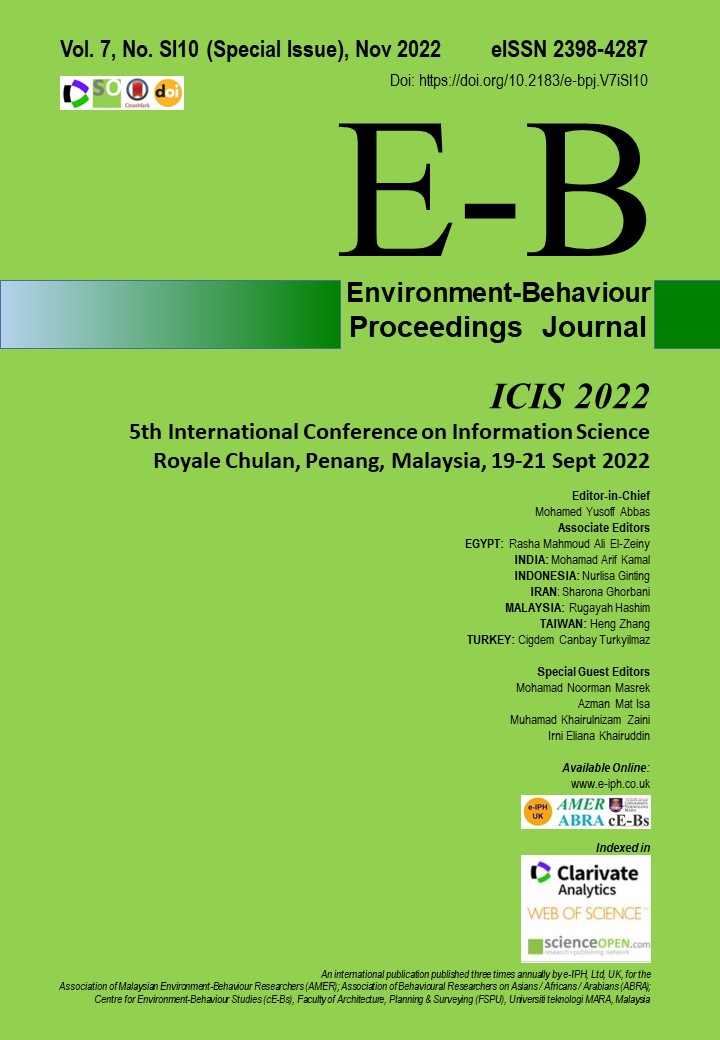Critical Success Factors on Gamification to Support the Learning Process in University
DOI:
https://doi.org/10.21834/ebpj.v7iSI10.4135Keywords:
Gamification, Learning, Critical Success Factors, University Students;, Learning ProcessAbstract
Gamification is the process of implementing a game strategy in the learning process. Gamification in the lecture environment increases creativity and interactivity and provides students with a sensation of accomplishment (Sense of accomplishment). The development of communication technology increased rapidly, which impacted the development of the games industry, which attracted Indonesian people in this case. Therefore, gamification can be an alternative to represent innovative and exciting learning for students in Indonesia. In this Research, the authors tried to analyze the determinants of the effectiveness of learning using gamification.
References
Dib, Hazar & Adamo, Nicoletta. (2014). Serious Sustainability Challenge Game to Promote Teaching and Learning of Building Sustainability. Journal of Computing in Civil Engineering. 28. A4014007. 10.1061/(ASCE)CP.1943-5487.0000357.
Faiella F. and M. Ricciardi, “Gamification and learning: A review of issues and research (2015),” J. E-Learning Knowl. Soc., vol. 11, no. 3, pp. 13–21, 2015, doi: 10.20368/1971-8829/1072.
Giannakos, M., & Vlamos, P. (2013). Educational Webcasts’ Acceptance: Empirical Examination and the Role of Experience. British Journal of Educational Technology, 44, 125-143. http://dx.doi.org/10.1111/j.1467-8535.2011.01279.x
Hanus, M. D., & Fox, J. (2015). Assessing the effects of gamification in the classroom: A longitudinal study on intrinsic motivation, social comparison, satisfaction, effort, and academic performance. Computers & Education, 80, 152–161. https://doi.org/10.1016/j.compedu.2014.08.019
Harandi S. R.(2015), “Effects of e-learning on Students’ Motivation,” Procedia - Soc. Behav. Sci., vol. 181, pp. 423–430, 2015, doi: 10.1016/j.sbspro.2015.04.905.t Haverila Matti, Barkhi Reza, (2009), The Influence of Experience, Ability and Interest on e-learning Effectiveness, School of Business and Management, Page(s) 1-13
Huang, W. H.-Y., Soman D. (2013). Gamification Of Education. Report Series: Behavioural Economics in Action, 29.
Jueru T., Silva R. F. E, Ferrao S.(2019), “Success factors for using gamification in language teaching,” 2019. doi: 10.1109/SIIE48397.2019.8970125.
Kapp, K. (2012) The Gamification of Learning and Instruction. Game-Based Methods and Strategies for Training and Education. Pfeiffer, San Francisco, CA. Lee, Joey & Hammer, Jessica. (2011). Gamification in Education: What, How, Why Bother?. Academic Exchange Quarterly. 15. 1-5.
Lim, S.L., Ong, K.C., Chan, Y.H., et al. (2012) Malnutrition and Its Impact on Cost of Hospitalization, Length of Stay, Readmission and 3-Year Mortality. Clinical Nutrition, 31, 345-350. https://doi.org/10.1016/j.clnu.2011.11.001
Loureiro S. M. C., Bilro R. G., Angelino and F. J. de A.(2020) , “Virtual reality and gamification in marketing higher education: a review and research agenda,” Spanish J. Mark. - ESIC, vol. ahead-of-p, no. ahead-of-print, 2020, doi: 10.1108/sjme-01- 2020-0013.
Martí-Parreño J., Seguí-Mas D., Seguí-Mas E. (2016) , “Teachers’ Attitude towards and Actual Use of Gamification,” 2016, doi: 10.1016/j.sbspro.2016.07.104.
McGonigal, J. (2011). Reality is broken: Why games make us better and how they can change the world. Penguin Press.
Obringer, L. A. (2002). How E-learning Works. http://www.howstuffworks.com
Payne, A.M., Stephenson, J.E. , Morris W.B., Tempest H.G., Mileham A., Griffin D.K. (2009), The use of an e-learning constructivist solution in workplace learning, International Journal of Industrial Ergonomics, Volume 39, Issue 3, 2009, Pages 548-553, ISSN 0169-8141, https://doi.org/10.1016/j.ergon.2008.10.019.
Pivec, M. (2011). Book review - Learning with digital games: A practical guide to engaging students in higher education. The International Review of Research in Open and Distributed Learning, 12(6), 206-208. https://doi.org/10.19173/irrodl.v12i6.1133
Poondej C. and Lerdpornkulrat T.(2016) , “The development of gamified learning activities to increase student engagement in learning,” Aust. Educ. Comput., 2016.
Shan, B. Y., and Tham, J. M. K. (2013). “Perceived Critical Success Factors ( Csfs ) for the Tourism Industry of Penang Island : a Supply Perspective,” Interdiscip. J. Contemp. Res. Bus., vol. 4, pp. 495–510, 2013.
Su, C.-H. and Cheng, C.-H. (2015), A mobile gamification learning system. Journal of Computer Assisted Learning, 31: 268-286. https://doi.org/10.1111/jcal.12088
Topîrceanu A. (2017), “Gamified learning: A role-playing approach to increase student in-class motivation,” Procedia Comput. Sci., vol. 112, pp. 41–50, 2017, doi: 10.1016/j.procs.2017.08.017.
Urh M., Vukovic G., Jereb E., Pintar R. (2015), “The Model for Introduction of Gamification into E-learning in Higher Education,” Procedia - Soc. Behav. Sci., 2015, doi: 10.1016/j.sbspro.2015.07.154.
Wagner, Nicole & Hassanein, Khaled & Head, Milena. (2008). Who is Responsible for E-Learning Success in Higher Education? A Stakeholders' Analysis.. Educational Technology & Society. 11. 26-36.
Welbers K., Konijn E. A., Burgers C., de Vaate A. B., Ede A. n, and Brugman B. C.(2019), “Gamification as a tool for engaging student learning: A field experiment with a gamified app,” E-Learning Digit. Media, vol. 16, no. 2, pp. 92–109, 2019, doi: 10.1177/2042753018818342.
Wen Hua, Andrew Chan, Zhenxing Mao (2009) Critical Success Factors and Customer Expectation in Budget Hotel Segment — A Case Study of China, Journal of Quality Assurance in Hospitality & Tourism, 10:1, 59-74, DOI: 10.1080/15280080802713702
Yang, J.C., Chien, K.H. & Liu, T.C. (2012). A Digital Game-Based Learning System for Energy Education: An Energy COnservation PET. Turkish Online Journal of Educational Technology. 11 (2), pp. 27-37.
Downloads
Published
How to Cite
Issue
Section
License
Copyright (c) 2022 Ferdianto Ferdianto, Mohamad Noorman Masrek, Mohd Nasir Ismail, Norizan Anwar, Yohannes Kurniawan

This work is licensed under a Creative Commons Attribution-NonCommercial-NoDerivatives 4.0 International License.





